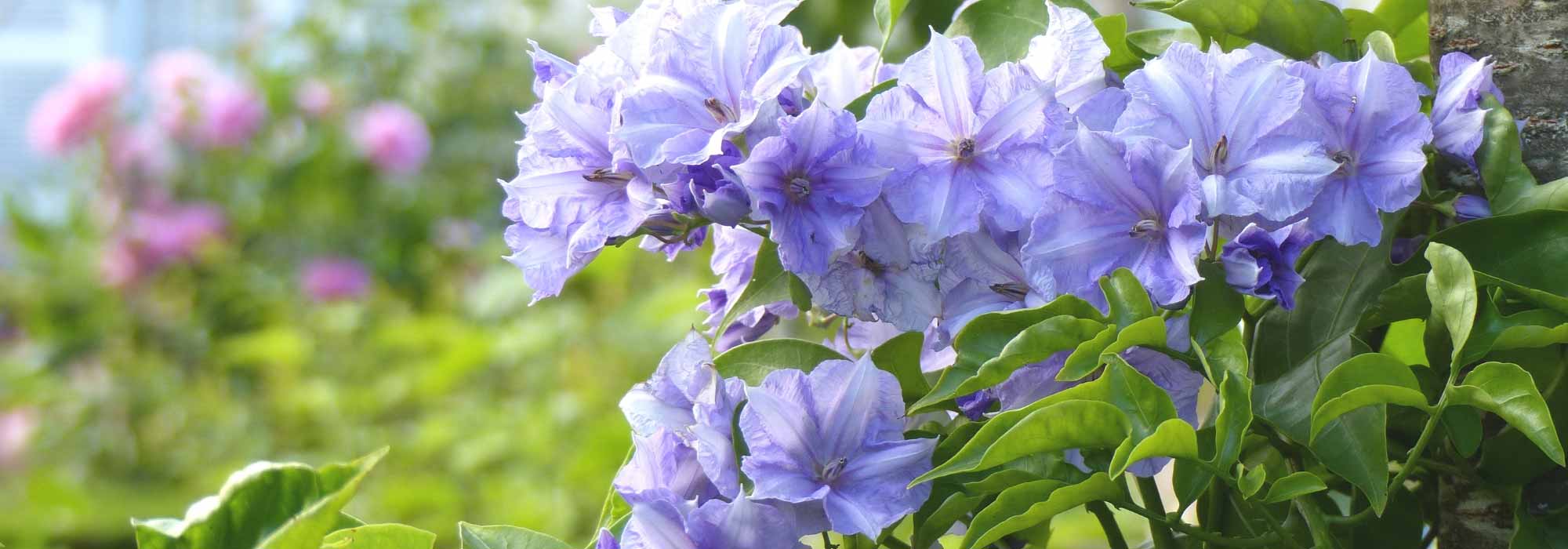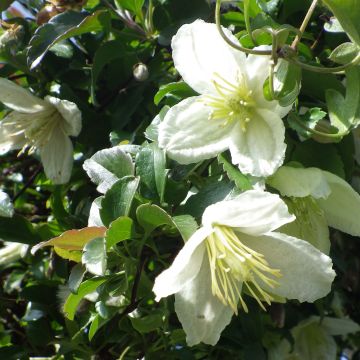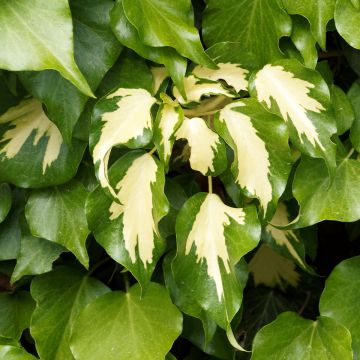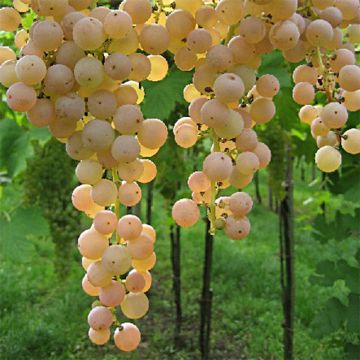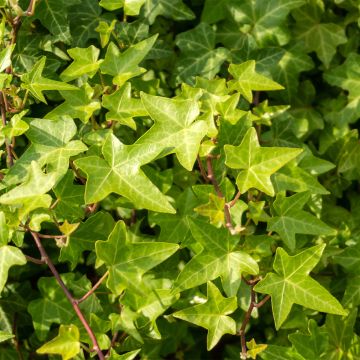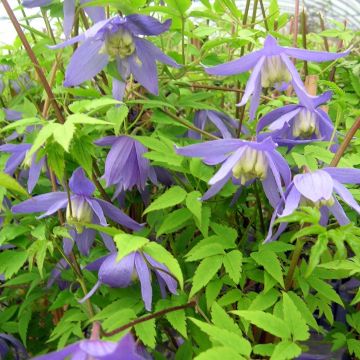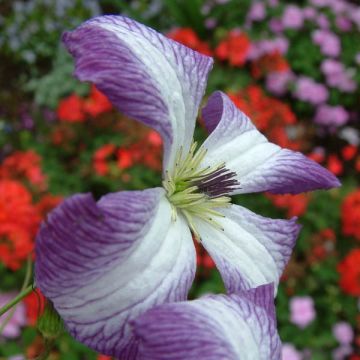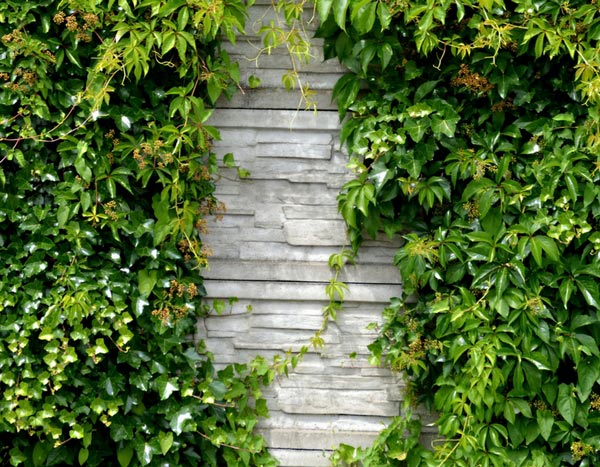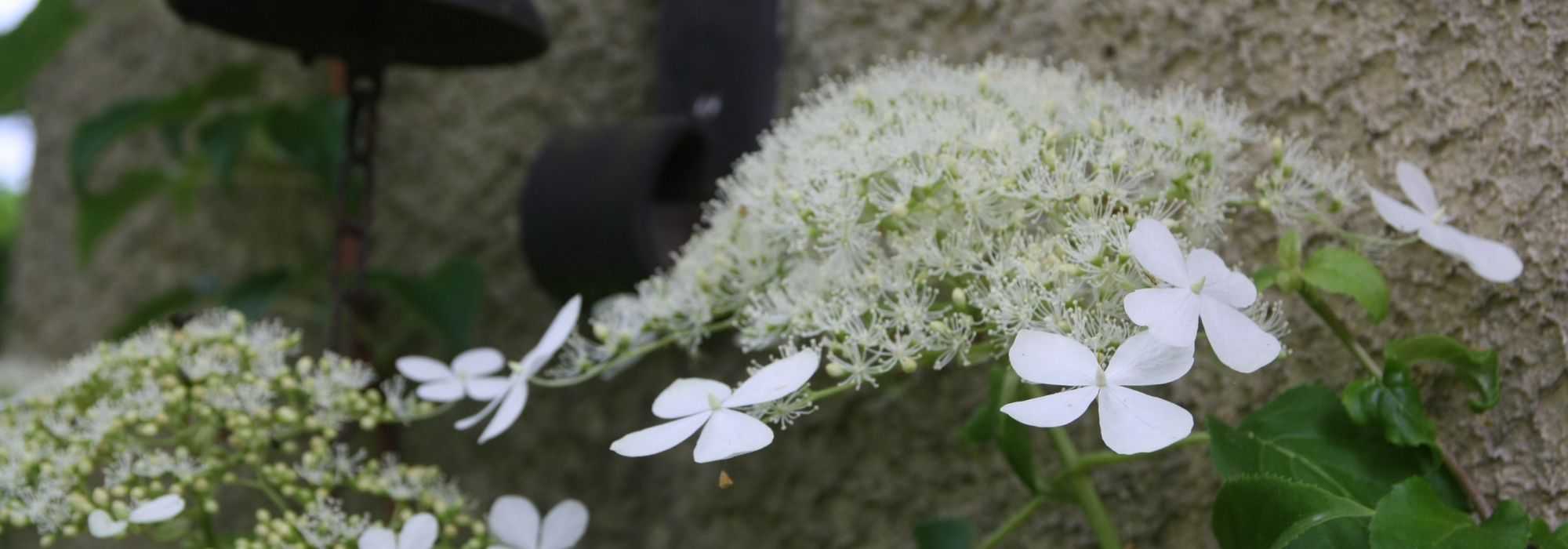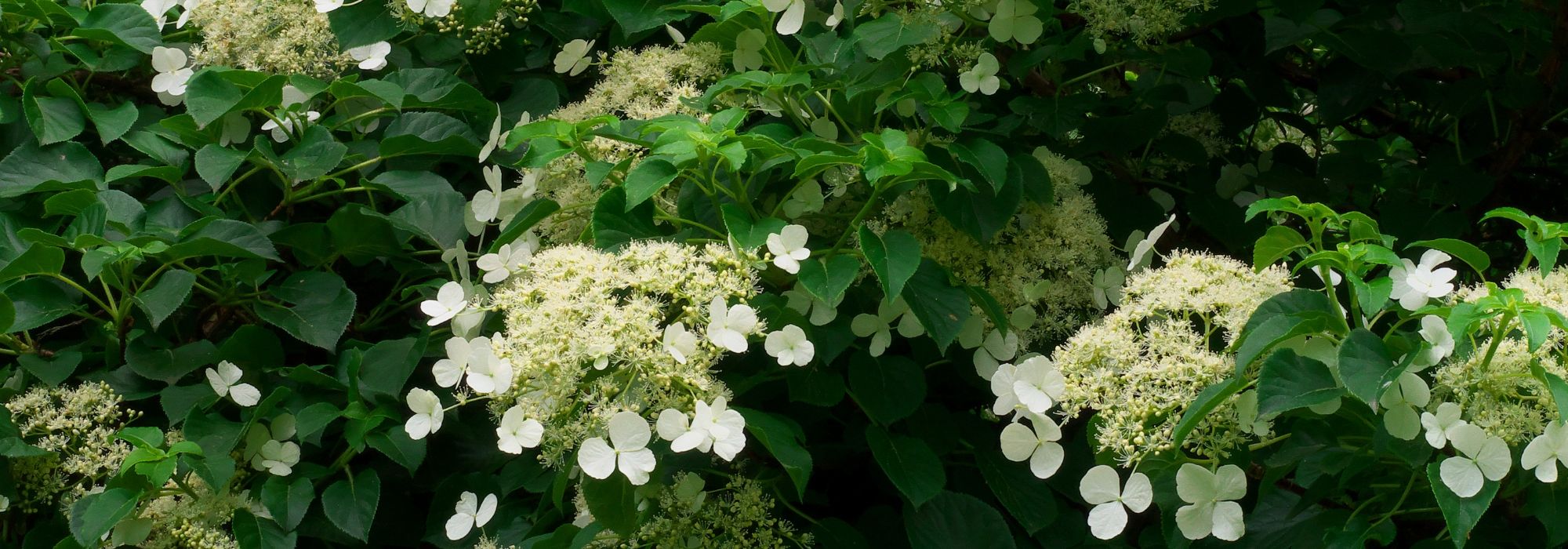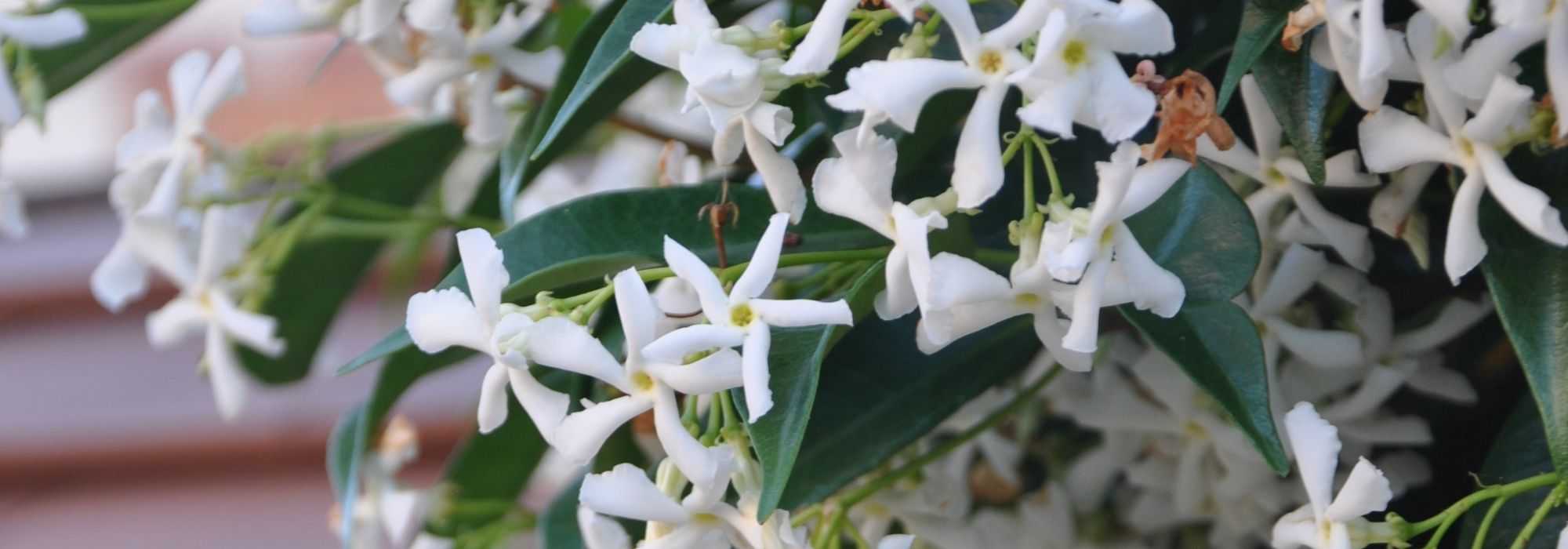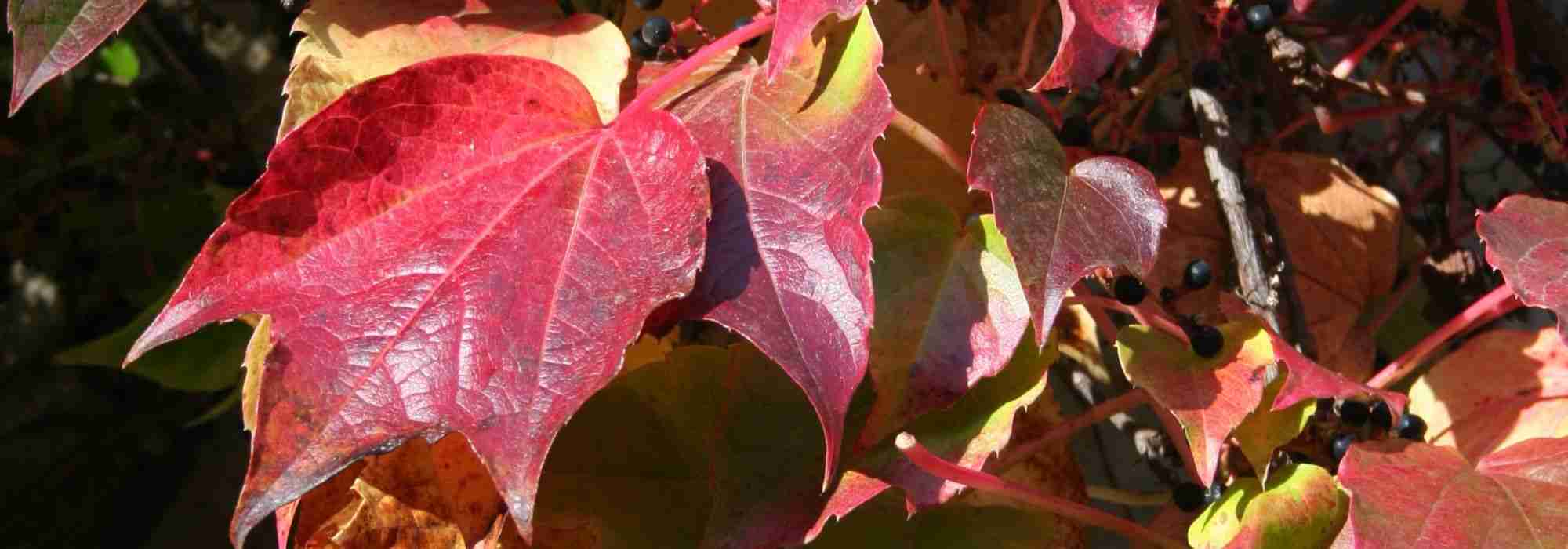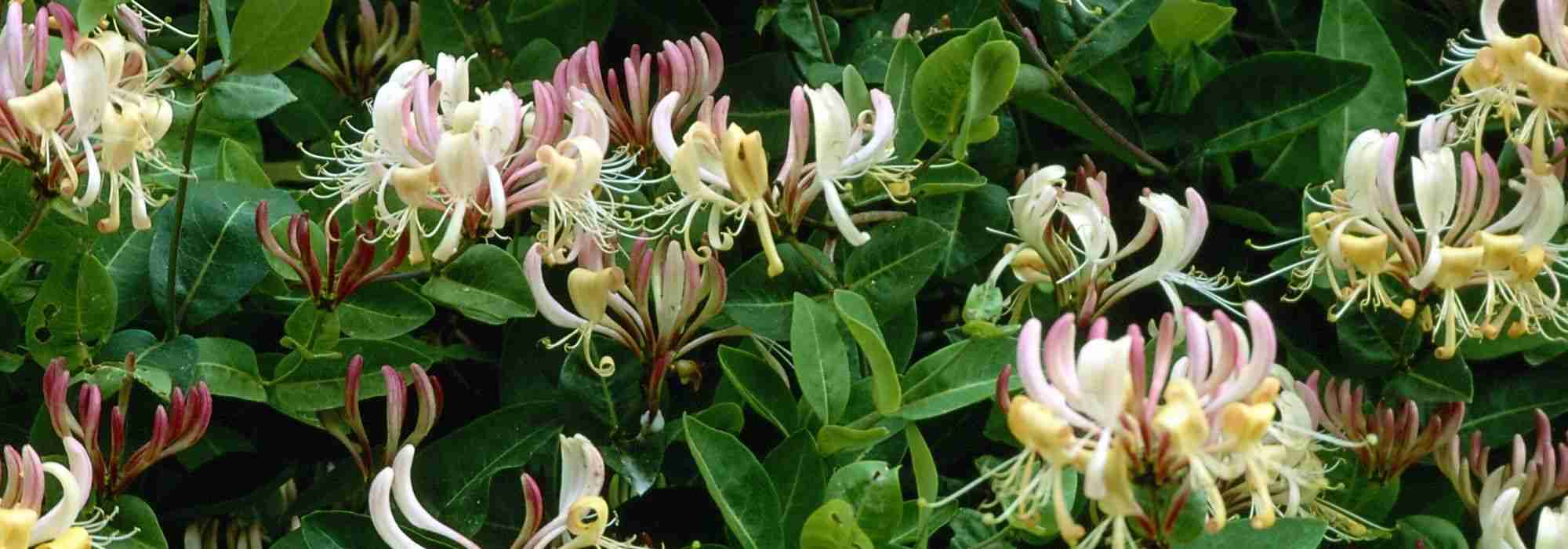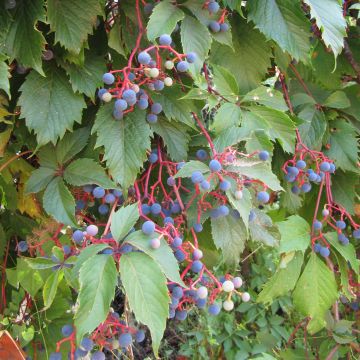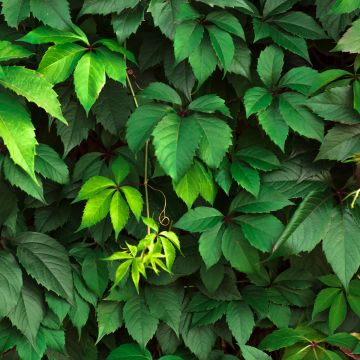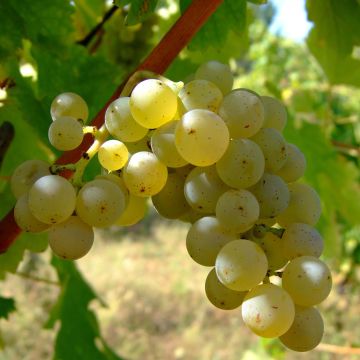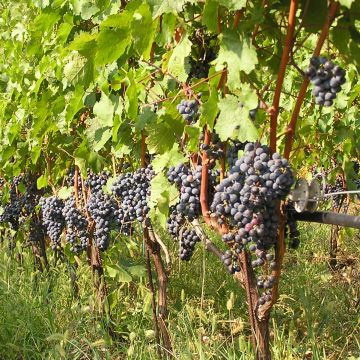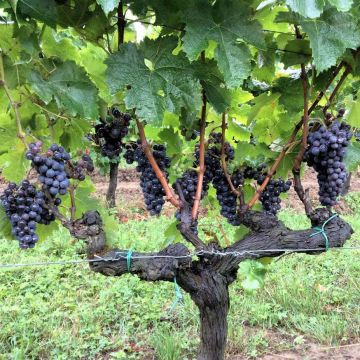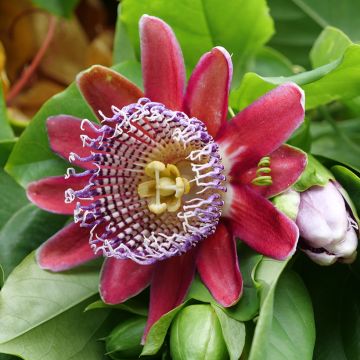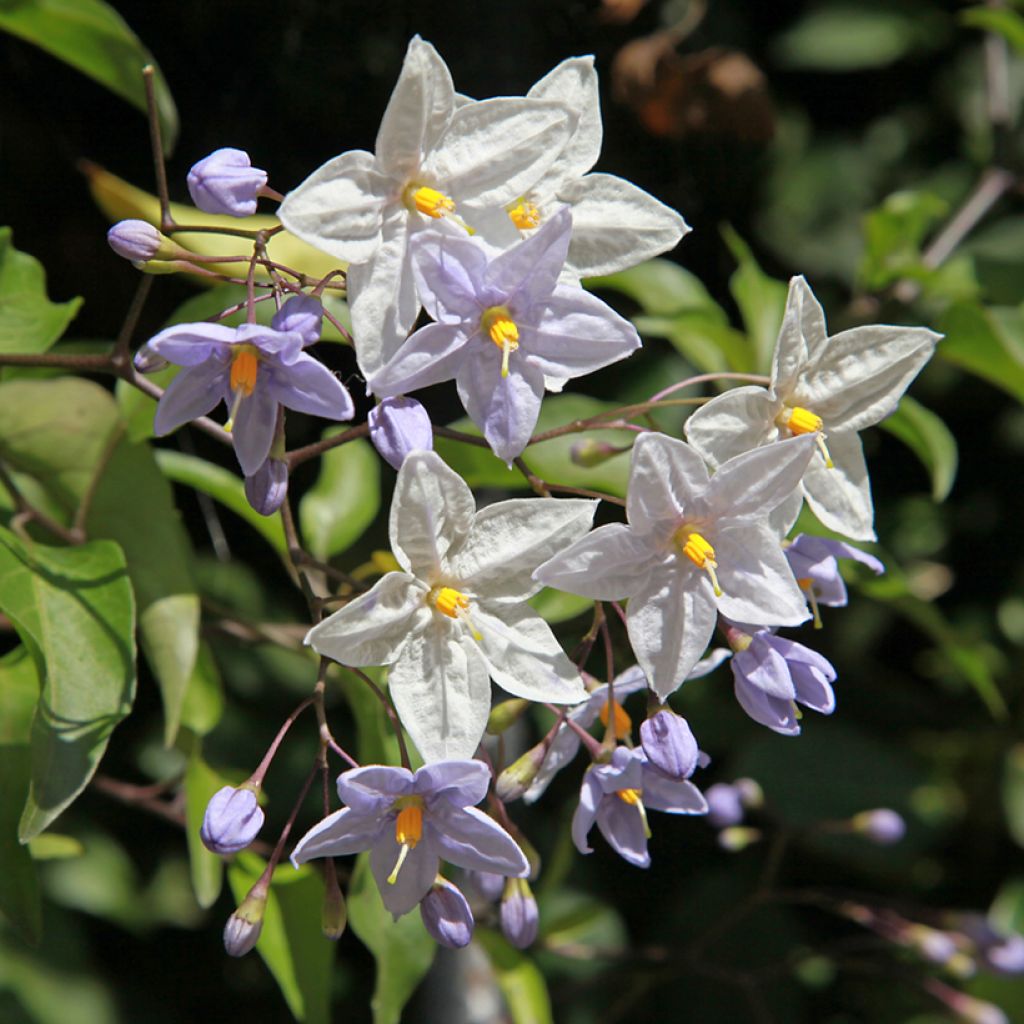

Solanum jasminoides - Morelle faux jasmin
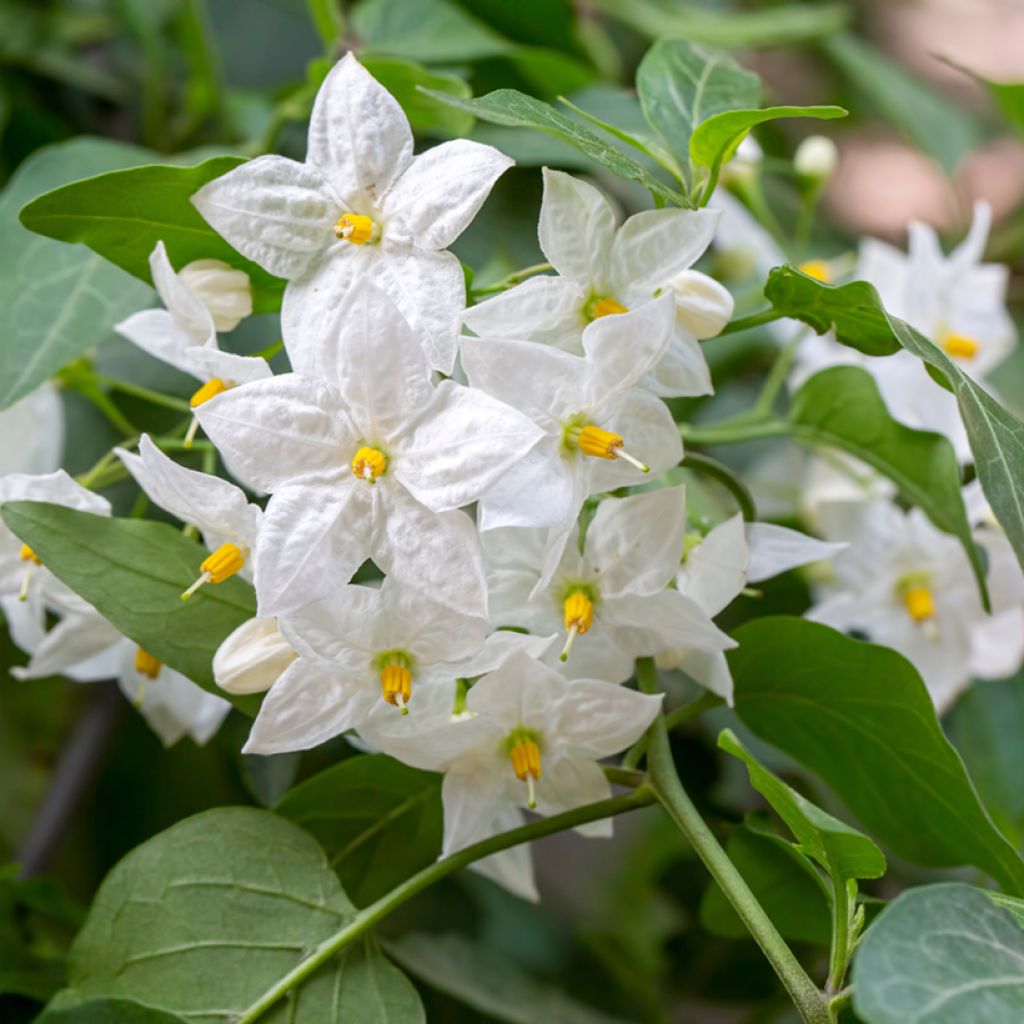

Solanum jasminoides - Morelle faux jasmin
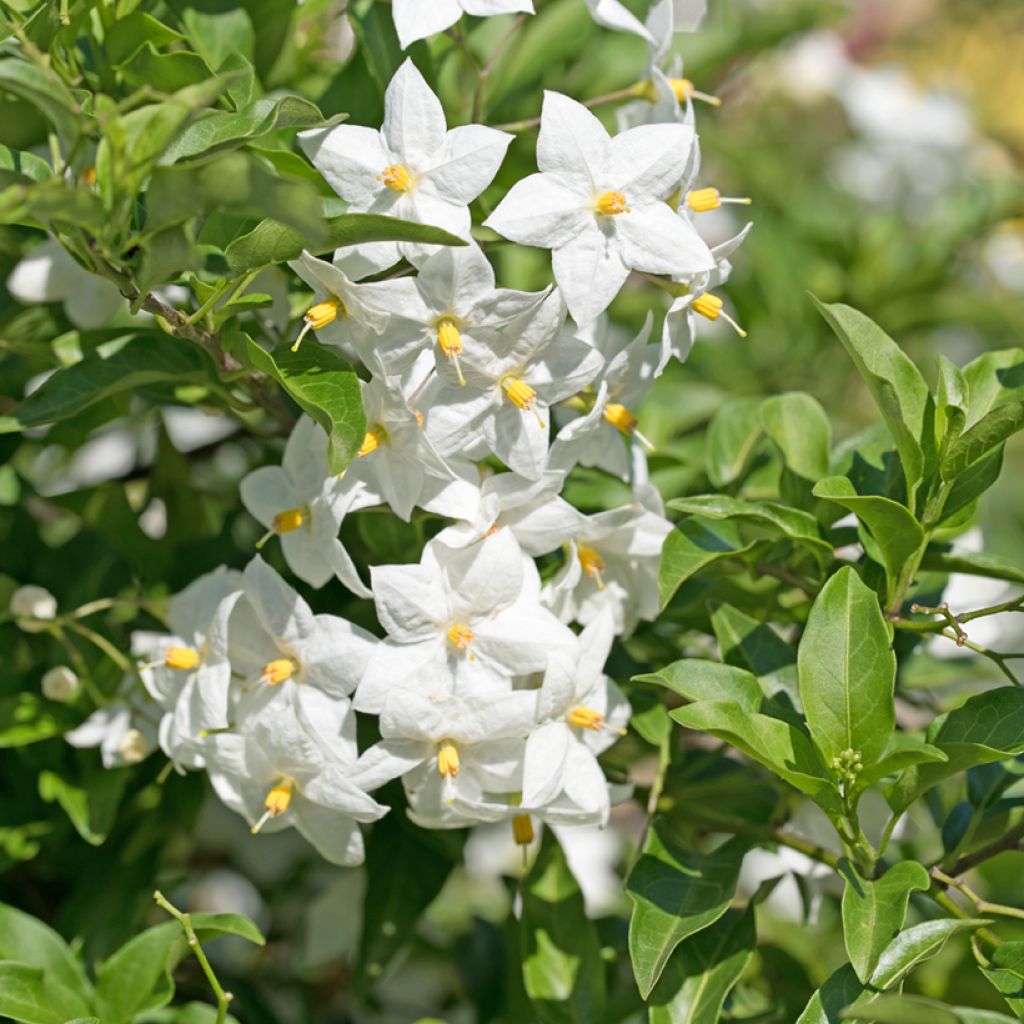

Solanum jasminoides - Morelle faux jasmin
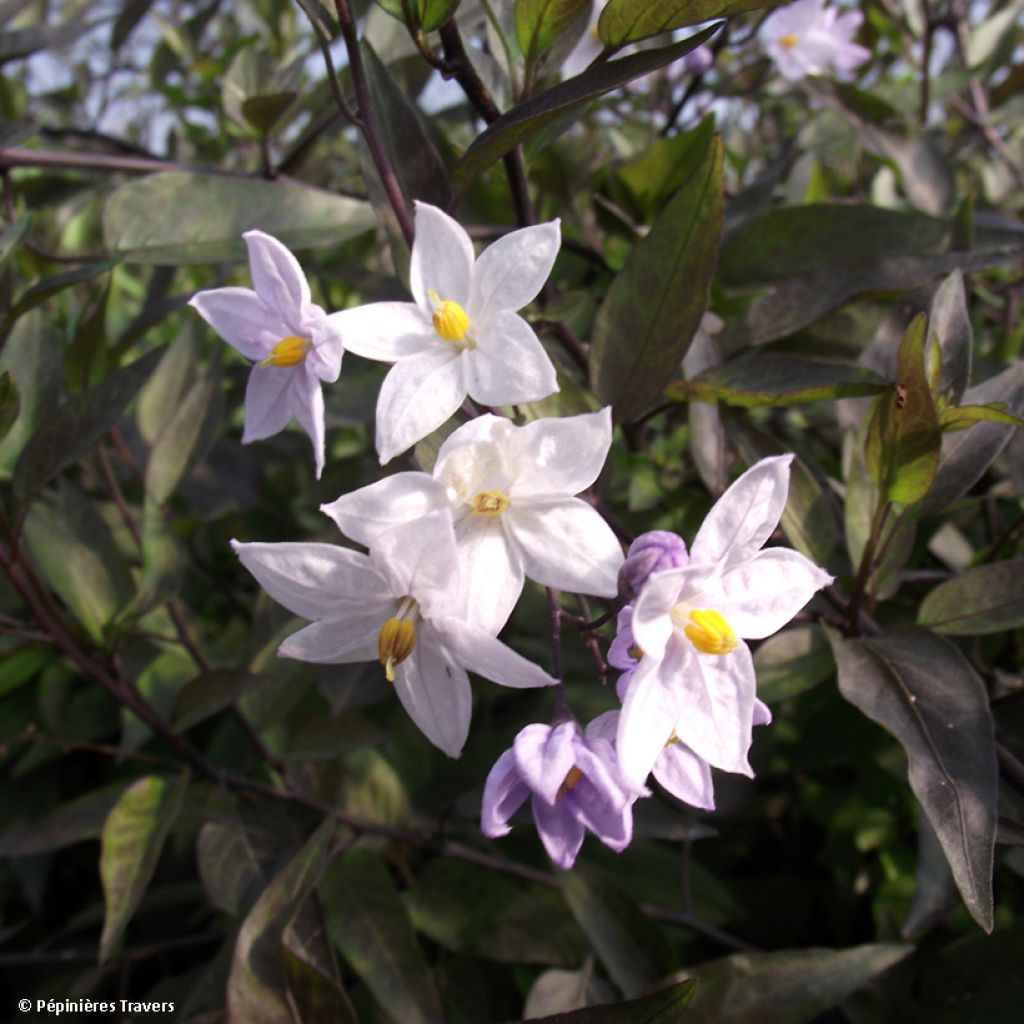

Solanum jasminoides - Morelle faux jasmin
Solanum jasminoides
Solanum jasminoides
Potato Vine, Jasmine Nightshade
The plant is very spindly and I'm afraid it might die even though it's well exposed...
Caduros, 09/04/2024
Special offer!
Receive a €20 voucher for any order over €90 (excluding delivery costs, credit notes, and plastic-free options)!
1- Add your favorite plants to your cart.
2- Once you have reached €90, confirm your order (you can even choose the delivery date!).
3- As soon as your order is shipped, you will receive an email containing your voucher code, valid for 3 months (90 days).
Your voucher is unique and can only be used once, for any order with a minimum value of €20, excluding delivery costs.
Can be combined with other current offers, non-divisible and non-refundable.
Home or relay delivery (depending on size and destination)
Schedule delivery date,
and select date in basket
This plant carries a 6 months recovery warranty
More information
We guarantee the quality of our plants for a full growing cycle, and will replace at our expense any plant that fails to recover under normal climatic and planting conditions.
Would this plant suit my garden?
Set up your Plantfit profile →
Description
The Solanum jasminoides, also known as the Potato vine, is a climbing plant native to South America that is highly floriferous, non-thorny, low-maintenance, and fast-growing, with semi-evergreen foliage in winter. Its only weakness is its moderate hardiness, to approximately -8 °C (17.6°F). It produces numerous clusters of small, pale mauve star-shaped flowers from June until the first frost. This small vie is commonly found in gardens in the southern regions, where it thrives in the warmth, early spring, and long autumn. Gardeners in cooler regions can easily grow it in a sheltered spot or in a large pot to overwinter.
The Solanum jasminoides, recently renamed Solanum laxum, is a woody climbing plant in the Solanaceae family, just like the potato and Datura. This species is native to the tropical and subtropical regions of South America, specifically southern Brazil and Ecuador. Its growth is so rapid that once well-established, the plant can reach its adult size in one or two seasons. Under our climates, it typically reaches an average height of 5 m (16ft) with a spread of 1 m (3ft). Its voluble stems wind around any available support and can cling to rough surfaces, such as walls. The stems bear evergreen to semi-evergreen foliage, depending on the severity of winter. The leaves are simple, ovate to lanceolate, measuring 3 to 6 cm (1 to 2in) in length and 2 to 3 cm (1in) in width. They are dark green in colour and may turn red in response to cold, but are not damaged by snow. The flowering period is from May-June to October-November, occasionally spanning 8 months in frost-free regions. The inflorescences are small paniculate clusters with bright star-shaped flowers measuring 2 cm (1in) in diameter. The flowers have 5 petals, washed with mauve, surrounding a core of thick yellow stamens. They are slightly fragrant and give rise to small violet berries measuring 5 mm (0in) in diameter, which are toxic like most Solanaceae fruits.
The Solanum jasminoides is valued for its vigour and long-lasting graceful flowering and can be easily paired with various climbing plants, such as the Clematis viticella purpurea 'Plena Elegans', Jasmin officinal, or Podranea ricasoliana, which can accompany it on a trellis or fence. In milder regions, it can flower almost year-round. It is necessary to train it, as otherwise it may form a large, tangled bush that is difficult to control. Note that this charming vine can become invasive in suitable climates. It is a perfect plant for coastal gardens. It is not water-demanding and only requires a few deep but spaced-out waterings during the summer to support its flowering.
Solanum jasminoides in pictures
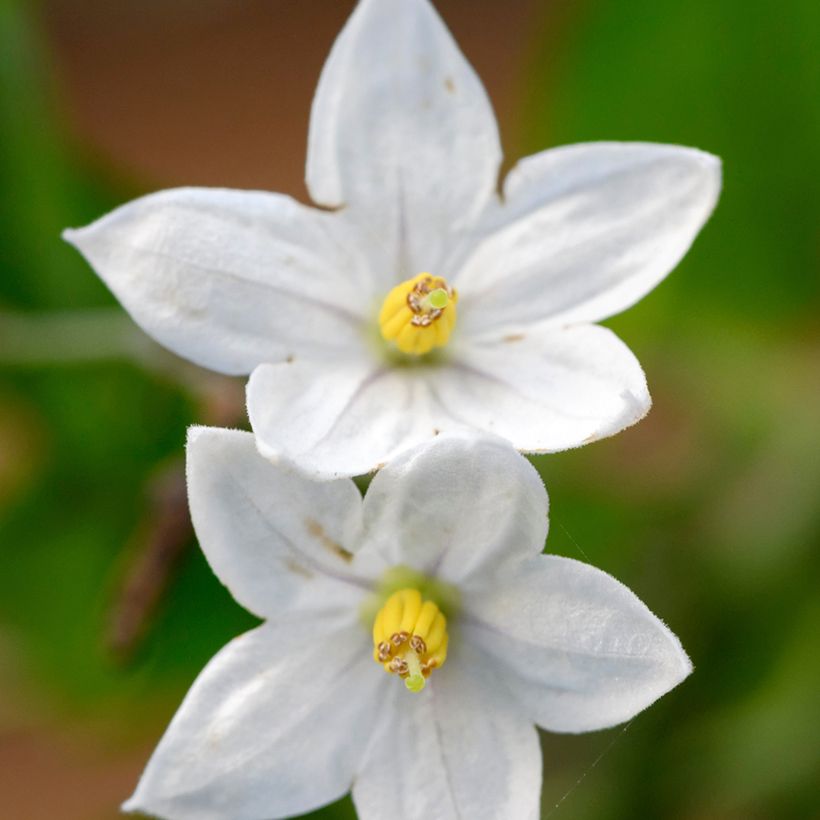

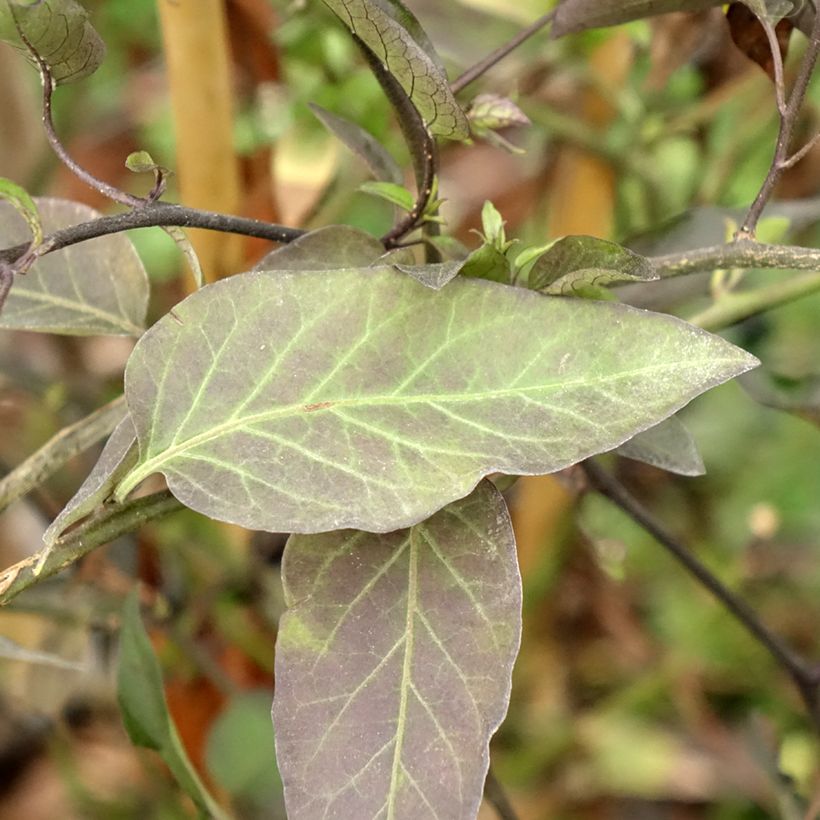

Plant habit
Flowering
Foliage
Botanical data
Solanum
jasminoides
Solanaceae
Potato Vine, Jasmine Nightshade
Cultivar or hybrid
Other Climbers A to Z
View all →Planting and care
You can plant your Solanum jasminoides in the ground or in a pot, in a sunny location. These plants, known to be not very hardy, can still thrive in the Paris region for example, in a very sheltered spot. If you plant them in the ground, wait until the heavy frosts have passed (they can tolerate a not too severe frost, not dropping below -8°C (17.6°F)). In the meantime, you can prepare them in a pot in a warm and bright place to accelerate their growth. These vines need a well-drained, rather dry soil and appreciate an organic fertiliser at planting, then regularly during growth in poor soil. In the ground, they only require occasional watering in summer to support flowering. Solanum jasminoides is not very demanding on the nature of the soil and tolerates the presence of limestone quite well. However, it prefers fertile and deep soils. In a pot, it should be regularly watered and benefit from frequent fertiliser application. Provide it with support to cling to (trellis, lattice, wire), of sufficient size to accompany its rapid growth. On a wall without irregularities, espalier is necessary. Attach hooks to the wall and stretch nylon wires horizontally, every 50 cm (20in), on which you will guide the stems. You can also let it grow freely: it will form a large, bushy ground cover in a slightly wild area of the garden. In a slightly cold region, take care to protect the stump and the base of the plant with a thick mulch and a winter cover.
In late winter, if the stems have been affected by frost, prune them to 30 cm (12in) from the ground: new stems will emerge from the stump. Regular pruning throughout the year is necessary to maintain a well-ordered appearance for your Solanum.
Diseases and pests: no known pathogens or pests in our climate, except for red spiders that can develop in warm and dry, poorly ventilated conditions.
Multiplication: by cuttings of herbaceous, flexible and green stems, non-flowering, in summer.
Planting period
Intended location
Care
Planting & care advice
-
, onOrder confirmed
Reply from on Promesse de fleurs
Similar products
Haven't found what you were looking for?
Hardiness is the lowest winter temperature a plant can endure without suffering serious damage or even dying. However, hardiness is affected by location (a sheltered area, such as a patio), protection (winter cover) and soil type (hardiness is improved by well-drained soil).

Photo Sharing Terms & Conditions
In order to encourage gardeners to interact and share their experiences, Promesse de fleurs offers various media enabling content to be uploaded onto its Site - in particular via the ‘Photo sharing’ module.
The User agrees to refrain from:
- Posting any content that is illegal, prejudicial, insulting, racist, inciteful to hatred, revisionist, contrary to public decency, that infringes on privacy or on the privacy rights of third parties, in particular the publicity rights of persons and goods, intellectual property rights, or the right to privacy.
- Submitting content on behalf of a third party;
- Impersonate the identity of a third party and/or publish any personal information about a third party;
In general, the User undertakes to refrain from any unethical behaviour.
All Content (in particular text, comments, files, images, photos, videos, creative works, etc.), which may be subject to property or intellectual property rights, image or other private rights, shall remain the property of the User, subject to the limited rights granted by the terms of the licence granted by Promesse de fleurs as stated below. Users are at liberty to publish or not to publish such Content on the Site, notably via the ‘Photo Sharing’ facility, and accept that this Content shall be made public and freely accessible, notably on the Internet.
Users further acknowledge, undertake to have ,and guarantee that they hold all necessary rights and permissions to publish such material on the Site, in particular with regard to the legislation in force pertaining to any privacy, property, intellectual property, image, or contractual rights, or rights of any other nature. By publishing such Content on the Site, Users acknowledge accepting full liability as publishers of the Content within the meaning of the law, and grant Promesse de fleurs, free of charge, an inclusive, worldwide licence for the said Content for the entire duration of its publication, including all reproduction, representation, up/downloading, displaying, performing, transmission, and storage rights.
Users also grant permission for their name to be linked to the Content and accept that this link may not always be made available.
By engaging in posting material, Users consent to their Content becoming automatically accessible on the Internet, in particular on other sites and/or blogs and/or web pages of the Promesse de fleurs site, including in particular social pages and the Promesse de fleurs catalogue.
Users may secure the removal of entrusted content free of charge by issuing a simple request via our contact form.
The flowering period indicated on our website applies to countries and regions located in USDA zone 8 (France, the United Kingdom, Ireland, the Netherlands, etc.)
It will vary according to where you live:
- In zones 9 to 10 (Italy, Spain, Greece, etc.), flowering will occur about 2 to 4 weeks earlier.
- In zones 6 to 7 (Germany, Poland, Slovenia, and lower mountainous regions), flowering will be delayed by 2 to 3 weeks.
- In zone 5 (Central Europe, Scandinavia), blooming will be delayed by 3 to 5 weeks.
In temperate climates, pruning of spring-flowering shrubs (forsythia, spireas, etc.) should be done just after flowering.
Pruning of summer-flowering shrubs (Indian Lilac, Perovskia, etc.) can be done in winter or spring.
In cold regions as well as with frost-sensitive plants, avoid pruning too early when severe frosts may still occur.
The planting period indicated on our website applies to countries and regions located in USDA zone 8 (France, United Kingdom, Ireland, Netherlands).
It will vary according to where you live:
- In Mediterranean zones (Marseille, Madrid, Milan, etc.), autumn and winter are the best planting periods.
- In continental zones (Strasbourg, Munich, Vienna, etc.), delay planting by 2 to 3 weeks in spring and bring it forward by 2 to 4 weeks in autumn.
- In mountainous regions (the Alps, Pyrenees, Carpathians, etc.), it is best to plant in late spring (May-June) or late summer (August-September).
The harvesting period indicated on our website applies to countries and regions in USDA zone 8 (France, England, Ireland, the Netherlands).
In colder areas (Scandinavia, Poland, Austria...) fruit and vegetable harvests are likely to be delayed by 3-4 weeks.
In warmer areas (Italy, Spain, Greece, etc.), harvesting will probably take place earlier, depending on weather conditions.
The sowing periods indicated on our website apply to countries and regions within USDA Zone 8 (France, UK, Ireland, Netherlands).
In colder areas (Scandinavia, Poland, Austria...), delay any outdoor sowing by 3-4 weeks, or sow under glass.
In warmer climes (Italy, Spain, Greece, etc.), bring outdoor sowing forward by a few weeks.






























